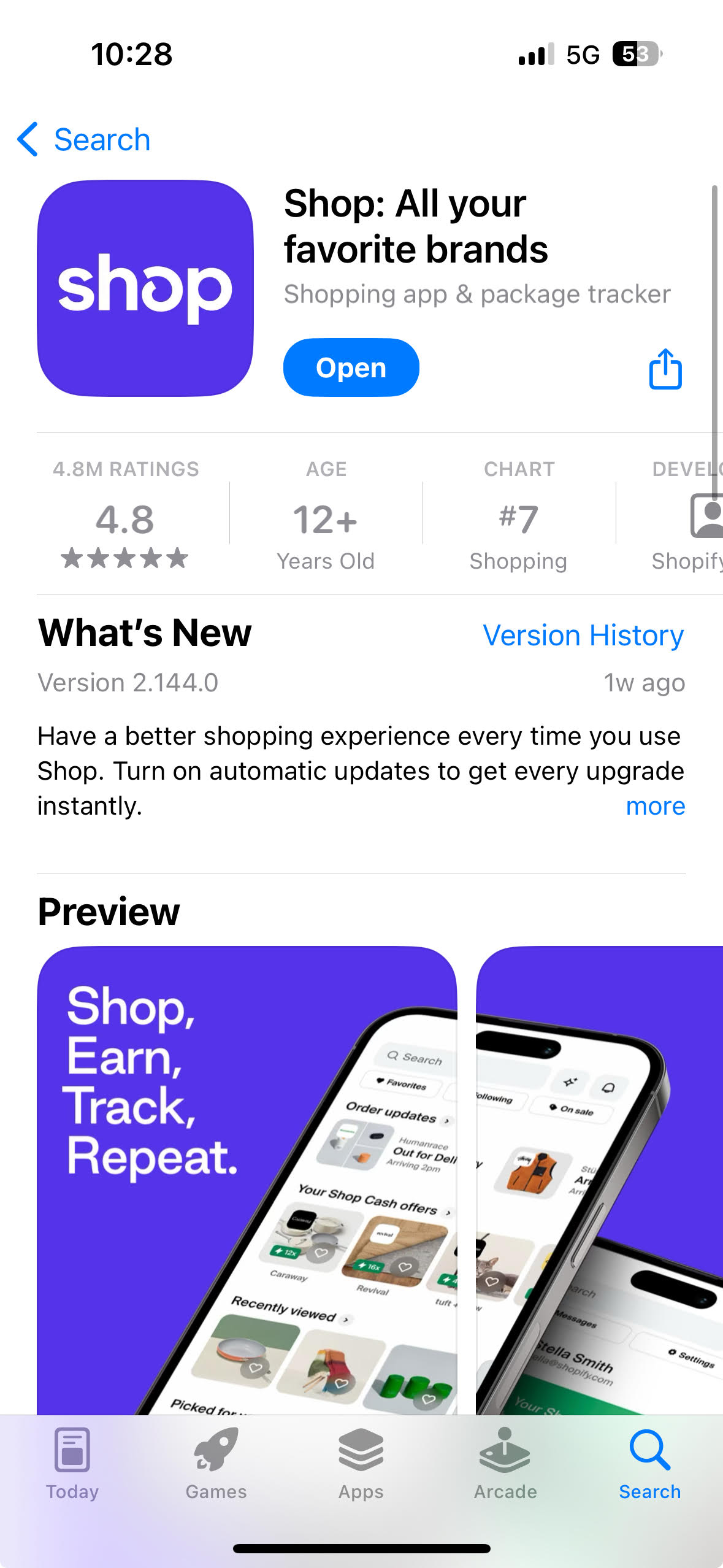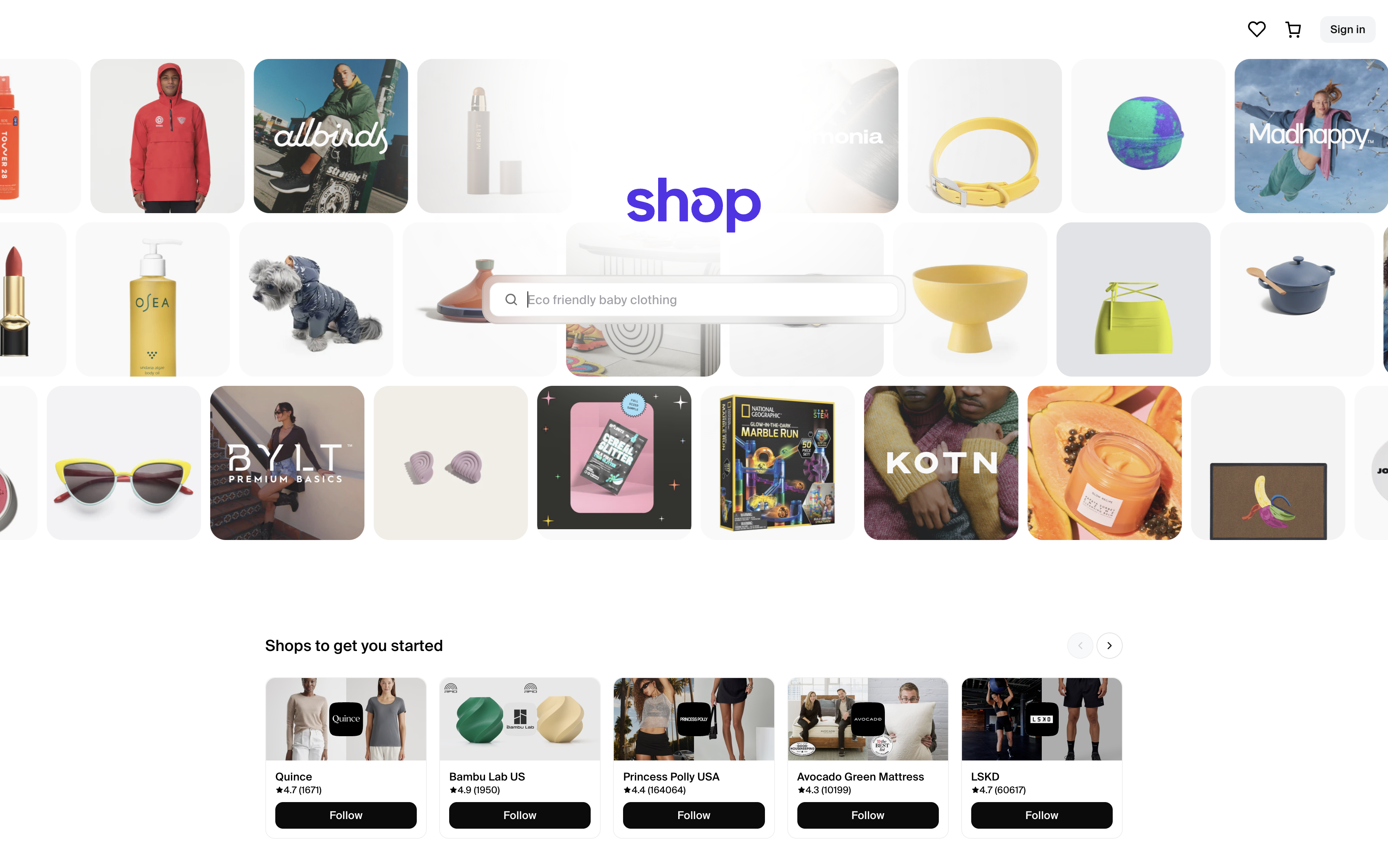
Case Study: Building Shop with Remix

Building good software is largely about understanding your constraints and then picking the right tools. When Shopify decided to build a web version of Shop, it was important to:
- Utilize existing tools and infrastructure
- Leverage code from the native clients
- Enable regular and rapid feature releases
- Scale to support millions of users
- Ship as quickly as possible
We on the Remix team sat down with our colleagues Sebastian Ekström and Dominic Lind from the Shop team to discuss why they chose Remix for this project and how it went. This is the story about how Shop.app was built with Remix.
What is Shop?

Shop is an application that allows buyers to discover merchants and products, make purchases, and track orders. Shop automatically aggregates shipping information across various delivery services. Whether its through UPS, FedEx, or any other delivery method or company, Shop will automatically track all of your deliveries in one spot.
Shop's native app has millions of downloads from the Google Play and Apple App store. While Shop has served the needs of many customers for years, the website has only been used as marketing pages to redirect users to the native app.
In early 2023, Shopify started exploring the idea of bringing Shop to the web.
Building Shop for the web

For a long time Shop.app consisted of a few simple landing pages encouraging users to download the iOS or Android app. There was no functionality — no way to browse categories or products, no way to add items to your cart, and certainly no way to purchase anything.
The initial goal was to achieve feature parity with the native apps. However, it became clear that merely recreating the Shop experience on web for existing users was not thinking big enough. The web has unique advantages that would complement the native apps.
Capturing more users
Even with limited functionality, the Shop marketing pages drew substantial traffic. While some of these visitors would proceed to download the app, many would not. With Shop.app users would have the option to sign up on the web, widening the net for acquiring new users.
Faster feedback loop
New versions of the website can be shipped multiple times a day, whereas the native applications have a much longer waiting period due to the nature of mobile development.
Adding Shop.app would open up new possibilities. It would enable Shopify to run short-term ad campaigns and conduct daily experiments. The valuable user feedback gathered from these activities could then be utilized to enhance future versions of Shop's native and web clients.
Building Shop.app with Remix
Often when a project grows, it starts out as a website and then expands into native counterparts. With Shop, it was the opposite; the way the native apps were built heavily influenced how the website had to be developed.
The Shop team wanted to reuse logic, styles, and UX from the Shop native app in Shop.app. They also wanted native and web developers to be able to easily collaborate and build features across both platforms.
The native versions of Shop, built in React Native, already had a substantial infrastructure in place for styles and data loading. Consequently, any framework chosen for the web needed to use React. Moreover, it had to be flexible enough to accommodate the team's existing patterns, such as data fetching with Apollo Client.
Finally, the pages needed to be Server-Side Rendered (SSR) for the best UX and SEO. While Shopify already had methods for building React apps with SSR, the Shop team was eager to experiment with Remix. They needed something that would allow them to quickly launch and rapidly add new features and pages over time.
Proof of concept: Shop.ai
In February of 2023, shortly before the Shop.app work began, the lead developers on the team had a similar, but smaller-scoped challenge: build an AI-powered shopping assistant on the web.
Shop smarter with https://t.co/7YAW0Tk8Rh! We've brought our ChatGPT-powered shopping assistant to the web — try it out, and don’t forget to sign in with Shop to save your faves 💜 pic.twitter.com/DpSdLEr4QD
— Shop (@shop) March 15, 2023
Shop.ai now redirects to Shop.app. However, the initial version was a single webpage showing off a Shop chatbot built on top of OpenAI's newly released ChatGPT.
The team had ~1 month to build this site. They were looking for a fast and adaptable framework to expedite this project. This was the perfect opportunity to try Remix. Even though they didn't use many of the features that makes it great (data fetching, routing, nested layouts, etc.), Remix proved to be straightforward and flexible enough to rapidly develop Shop.ai.
This positive experience gave them confidence to pick Remix when it came time to build Shop.app.
Monorepo + Remix = Success
“With Shop.app we wanted to reuse a lot of the code we had from the [native] app. Remix allowed us to do that without being a hurdle. It allowed us to migrate piece by piece.”

As mentioned, the Shop native app is built with React Native. To ease development between the iOS, Android, and web versions of Shop, the team uses a monorepo that contains the source code for all three.
The monorepo setup simplified migrating the existing marketing version of Shop.app pages to the new experience. This also meant that the fundamental infrastructure for linting, testing, CI/CD, etc. were already setup.
The Shop team was able to easily integrate Remix with the existing infrastructure due to the flexibility and level of control Remix offered. Because the team could integrate Remix into their existing system so easily, it allowed them to start rapidly developing Shop.app.
Get Sh*t Done
“I have never produced so much, in such a short amount of time, with such good results.”

At Shopify we have a phrase: "Get Shit Done". Shopify as a company prides itself in building new and innovative things, and building them fast.
With Shop.app, the team was eager to launch an initial version of the product pages as quickly as possible. The whole team was aligned on building as fast as they could, and they found they could go pretty fast with Remix.
The team started building Shop.app in April, 2023. Beyond being flexible enough to easily integrate with their existing monorepo, Remix also provided many other out-of-the-box features the team needed to move fast: SSR, routing, link prefetching, and much more. Using Remix the team was able to launch the initial product page by July, 2023.
That's 3 months of Getting Shit Done
With Remix, the team was able use their existing backend, patterns, and libraries instead of being forced to rewrite their infrastructure in a "Remix-y" way. There are additional Remix-specific APIs Shop.app doesn't fully take advantage of, such as the Remix loading patterns and defer. Remix gives developers full control of their project and offers useful levers to pull when needed. This philosophy allowed the Shop team to easily hook in their own patterns and libraries, while incrementally leveraging and experimenting with Remix features as they went.
Shipping the initial version of Shop.app to millions of people all around the world in such a short amount of time could not have been done without Remix.
Even faster with Vite
One struggle the team did have with Remix was slow Hot Module Replacement (HMR). It took ~9s from the time a developer hit save to when they were able to see their changes reflected locally.
Luckily we were already working on a solution. The Shop team was ecstatic when they learned that the Remix team was changing the compiler to be a Vite plugin. They were so confident in the new Vite plugin and the DX benefits it would give their team they didn't hesitate to starting using it, even before it was marked as stable.
Migrating to Vite immediately improved their HMR times to 2.3s.
These were just the initial numbers. The team was able to reduce HMR times even further by parallelizing the build process for their style system, Tailwind CSS. Once parallelized, HMR times decreased all the way down to 0.1s.
That's 9s down to 0.1s, a 90x improvement
Summary
The journey of building Shop.app with Remix is a testament to Remix's flexibility, DX, and scalability, as well as Shopify's focus on building good, useful software in quick and iterative fashion.
By leveraging the advantages of a monorepo setup, building on top of existing infrastructure, and harnessing the rapid development capabilities of Remix, Shopify was able to successfully transformed Shop.app from a simple marketing site into a fully functional web application.
The move to Vite further accelerated the development process, drastically improving HMR times and boosting productivity. The team was able to accomplish this before Vite was stabilized due to Remix's continuous delivery with unstable and future flags.
Shopify was able to quickly and effectively deliver a complex and useful web app to millions of users with Remix. What will you build with Remix?